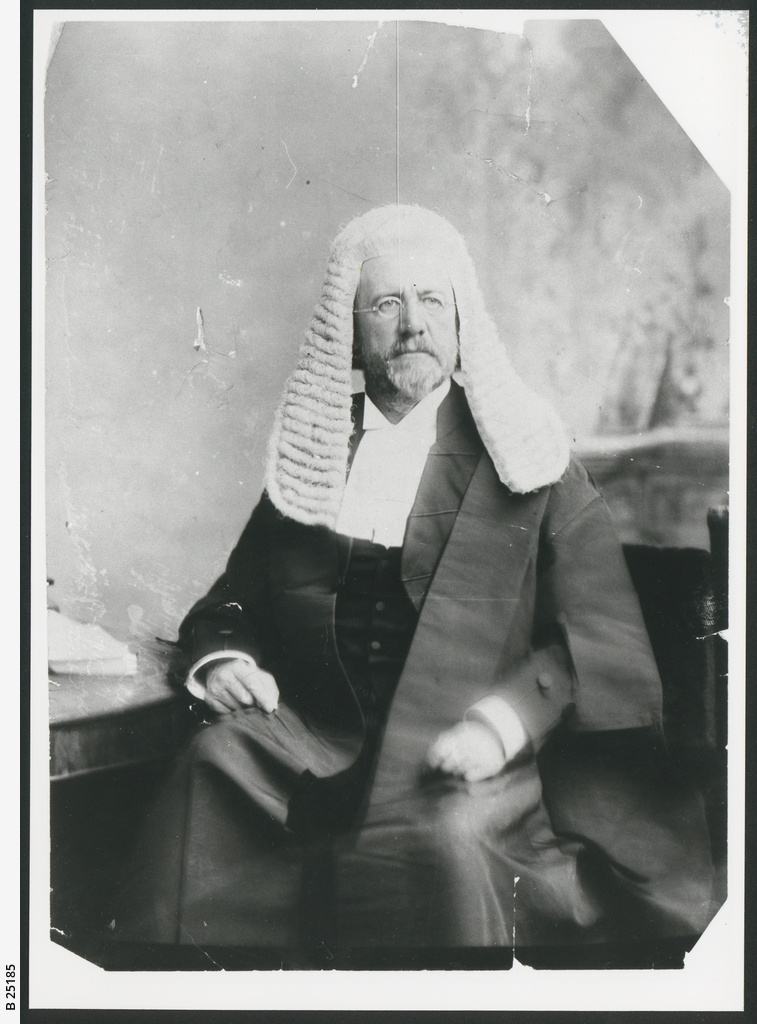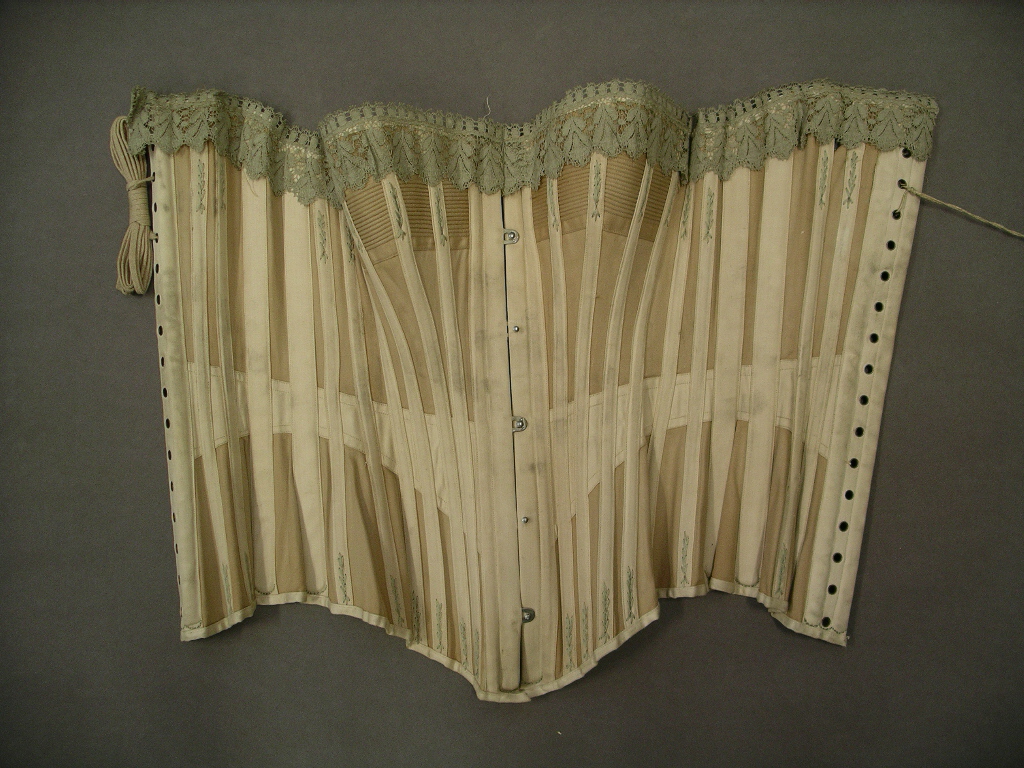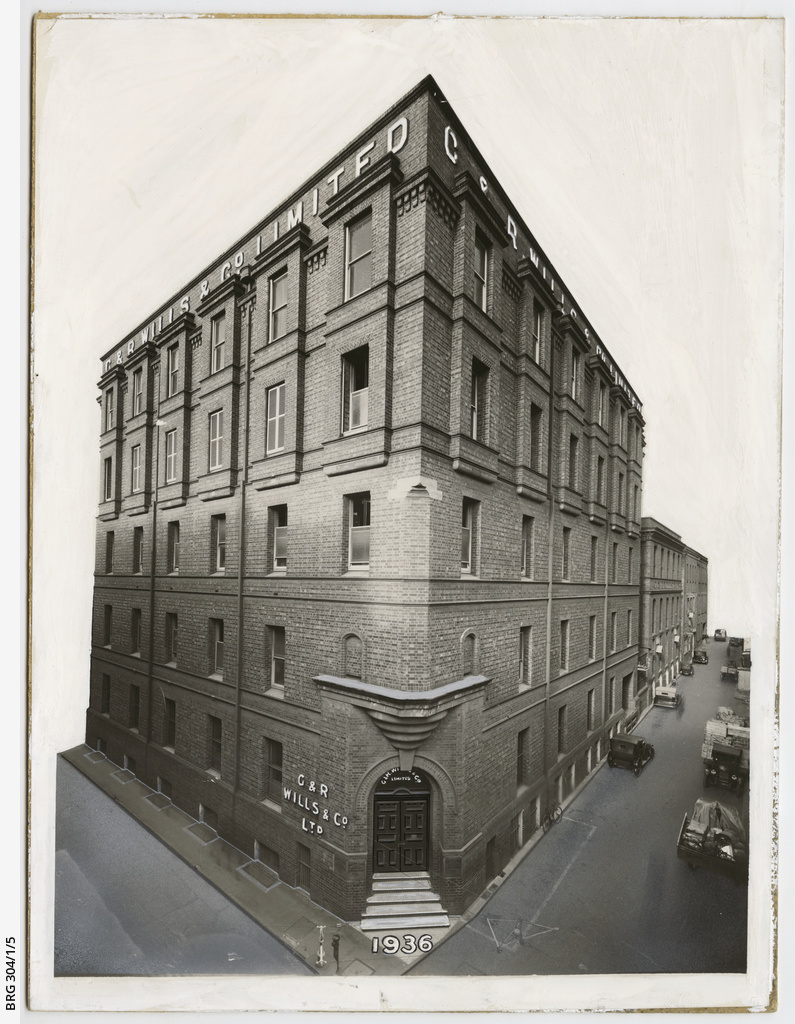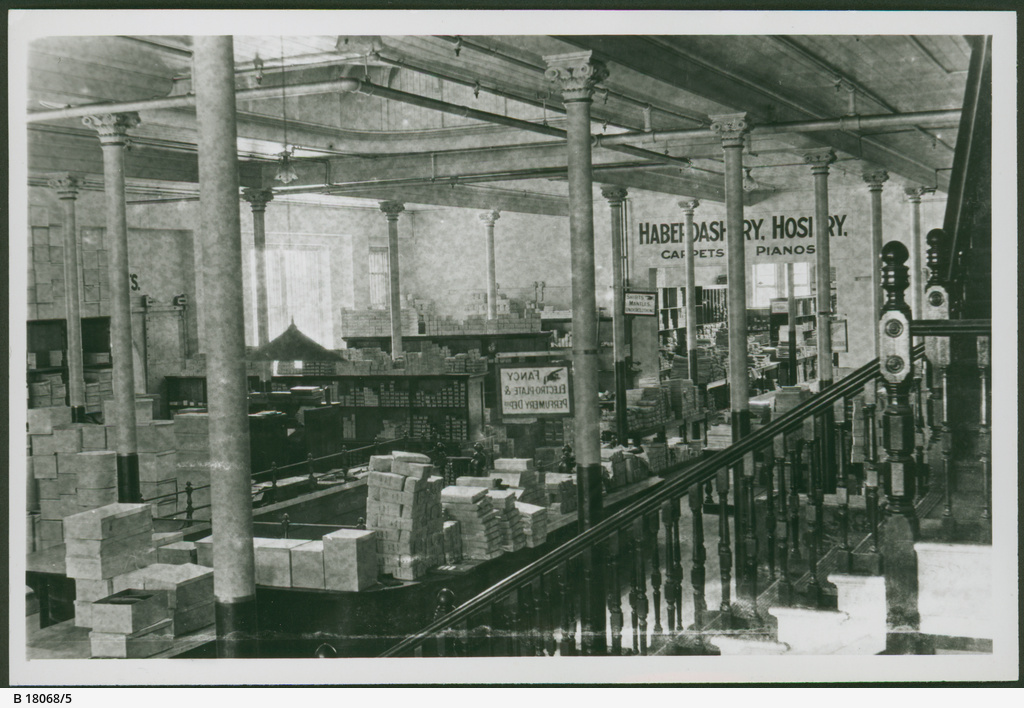Suggest a topic
Suggest a new Did you know? topic

The Corset Case
891 ABC Afternoon Delights at the State Library : 2 March 2004
Carole Whitelock talked with Michael Talbot
 |
 |
| Chief Justice Way, ca.1905 B 25185 |
William Pretty & Sons WB Correct Form Corset BRG 304/box 49 |
George Wills founded G & R Wills, importers and warehousemen in 1849. George and Richard Wills expanded the business to include clothing and footwear manufacture. In 1858 the business created its own buying organisation in London. A separate firm, George Wills & Co was created in 1881 to handle shipping. G. & R. Wills and George Wills & Co became limited companies in 1913 and G. & R. Wills a public company in 1946. It was taken over by Industrial Equity ca.1983, then on-sold to Southern Farmers which was taken over by Independent Holdings Ltd ca.1989. Records of G & R Wills were given to the State Library in 1999 where they are held as BRG 304.
In 1904 there were two makers of WB corsets. The English firm William Pretty and Sons made the WB Correct Form Corset for an American firm, Warner Brothers. This was a cheaper corset than the WB Erect Form Corset made by Weingarten Brothers in New York. Weingarten Brothers claimed that by importing and selling the cheaper version in South Australia, G & R Wills were passing off, or misrepresenting, an inferior product as Erect Form Corsets (A.J. Hannan, The life of Chief Justice Way, 1960, pp. 208-210).
The William Pretty and Sons brand had been on the market in South Australia for at least nine years while Weingarten Brothers had only recently begun importing and selling their corsets.
The Chief Justice, Sir Samuel Way, tried the case and three Kings Counsels and a number of other lawyers were involved. Way complained of the length of time taken by the hearing and preparation of his judgement. His letters talk about the abominable corset case and said the hearing took 52 days and cost £20,000. There must be more money in corsets than in law, literature, or the Gospel.
There was no evidence that G & R Wills were engaged in misrepresentation and Ways judgment exonerated the firm.
The corset in the G & R Wills records was an exhibit in the case and given that it has a label saying it was provided as evidence in England is probably a William Pretty and Sons Correct Form Corset.
 |
 |
| Head office of G. & R. Wills & Co. Limited, Gawler Place, 1936 BRG 304/1/5 |
G & R Wills hosiery department, ca. 1919 |
The State Library's oral history collection contains interviews with a number of people who worked for G & R Wills. For example, in 1915, Douglas Murrie began a 31 year career working at the Gawler Place warehouse rising from post boy to second-in-charge of the perfumery department. In 1946 he was manager of the stationery department, but left to begin his own wholesale handbag business. He recalled his mother's belief that working for a warehouse was safe and secure. 'And when I got in G & R Wills', oh, she was that pleased.'
While I have not found specific accounts about what it was like to wear a corset in 1903, OH 614 is a half-hour interview with Helen Neall who worked in the corsetry department of John Martin's Department Store from 1961-1972. She speaks about how the department was organised; staff training; customer service and the style of women's underwear during the period.
More Afternoon Delights
ABC Afternoon Delights at the State Library was a series in which Carole Whitelock talked with Michael Talbot from the State Library about South Australian topics, illustrated by items from the Library's collections. View the associated SA Memory page for each topic.


